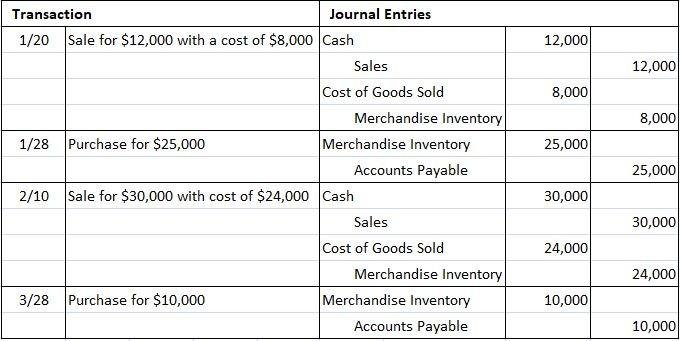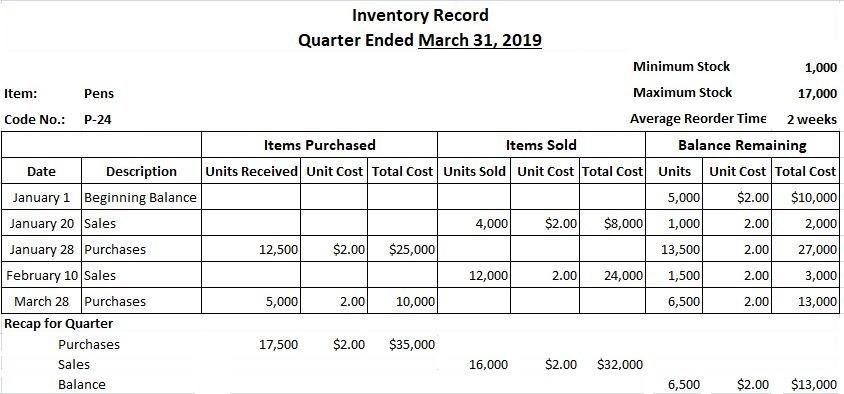In a world where every business strives to be a lean and mean profit-generating machine, few challenges are as pervasive as inventory management. Behind the scenes of every successful operation lies the delicate art of juggling supply and demand, turning a seemingly mundane task into an extraordinary powerhouse of potential. But what if we told you that this seemingly mundane task holds the key to unlocking hidden power within your business? Enter the enchanting realm of mastering inventory management, where a harmonious symphony of control and optimization can redefine your company’s success. Join us as we delve into the depths of this mystical practice, revealing secrets and strategies that will revolutionize the way you perceive and harness the hidden power of your inventory.
Table of Contents
- The Importance of Effective Inventory Management
- Key Strategies for Optimizing Inventory Levels
- Uncovering the Hidden Costs of Inefficient Inventory Management
- Implementing Technology Solutions for Streamlined Inventory Control
- Q&A
- To Wrap It Up

The Importance of Effective Inventory Management
Effective inventory management is crucial for businesses of all sizes and industries. It ensures that the right products are available in the right quantities, at the right place and time. By mastering inventory management, businesses can unlock a hidden power that leads to improved cash flow, customer satisfaction, and overall profitability.
One key benefit of effective inventory management is the reduction of carrying costs. When businesses maintain excess inventory, they tie up their capital in products that are not generating any revenue. This leads to increased storage and holding costs, as well as the risk of obsolescence. On the other hand, if a business carries too little inventory, they risk stockouts, which can result in lost sales and dissatisfied customers. By optimizing inventory levels, businesses can strike the right balance, minimizing carrying costs while ensuring product availability.
Another advantage of mastering inventory management is increased efficiency in order fulfillment. With the right inventory management system in place, businesses can streamline their supply chain operations. They can track inventory levels in real-time and accurately forecast demand, helping them avoid stockouts or overstocking situations. Furthermore, effective inventory management enables businesses to identify slow-moving or obsolete products, allowing them to take proactive measures such as promotions or markdowns to move inventory and maximize sales. This not only boosts revenue but also helps to free up valuable warehouse space.
In conclusion, effective inventory management is a critical aspect of business success. It offers numerous benefits including reduced carrying costs, improved customer satisfaction, and optimized order fulfillment. By implementing the right inventory management strategies and utilizing modern technology, businesses can unlock the hidden power of inventory management and gain a competitive edge in today’s dynamic marketplace.
Key Strategies for Optimizing Inventory Levels
Inventory management is an essential aspect of running a successful business. Efficiently managing inventory levels can lead to increased cash flow, reduced carrying costs, and improved customer satisfaction. To unlock the hidden power of inventory management, here are some key strategies that you should consider:
1. **Demand Forecasting:** Analyzing historical data and market trends can help you predict future demand accurately. By understanding customer buying patterns, you can optimize inventory levels to meet demand without overstocking or running out of stock.
2. **Just-in-Time (JIT) Inventory:** Adopting a JIT approach means receiving inventory just in time to fulfill customer orders. This strategy minimizes inventory holding costs and reduces the risk of obsolete stock. However, it requires strong relationships with suppliers and efficient logistics to ensure timely deliveries.
3. **ABC Analysis:** Classify your inventory into three categories – A, B, and C – based on their value or significance to your business. A items are high-value goods with a low frequency of sales, while C items are low-value items with high sales frequency. By prioritizing the management of A items, you can ensure that these crucial products are always available.
4. **Safety Stock:** Determine the appropriate level of safety stock needed to account for unforeseen fluctuations in demand or delays in supply. This buffer inventory helps prevent stockouts and protects customer satisfaction.
5. **Optimized Order Quantities:** Balancing the costs of ordering and carrying inventory is crucial. Implementing Economic Order Quantity (EOQ) models can determine the optimal order quantity, considering factors such as order costs, carrying costs, and demand patterns.
6. **Leveraging Technology:** Embrace inventory management software solutions that provide real-time visibility into stock levels, sales data, and supply chain information. These systems streamline inventory processes, enhance accuracy, and facilitate data-driven decision-making.
Uncovering the Hidden Costs of Inefficient Inventory Management
Good inventory management is crucial for any business, no matter the industry. It involves effectively organizing, tracking, and controlling a company’s inventory, ensuring that the right products are available at the right time, in the right quantities. However, inefficient inventory management can have hidden costs that can significantly impact a company’s bottom line.
One hidden cost of inefficient inventory management is the risk of stockouts. If a company doesn’t have enough inventory on hand to meet customer demand, it can result in lost sales and dissatisfied customers. This can lead to a decrease in customer loyalty and ultimately, a decline in revenue. On the other hand, carrying excess inventory can tie up valuable capital and warehouse space, leading to increased holding costs. Additionally, excess inventory can become obsolete or spoil, resulting in further financial losses. Inefficient inventory management can also cause excessive lead times, resulting in delays in product delivery. This can lead to missed deadlines, dissatisfied customers, and damage to a company’s reputation.

Implementing Technology Solutions for Streamlined Inventory Control
In today’s fast-paced business environment, managing inventory efficiently plays a pivotal role in the success of any organization. The ability to track, monitor, and control inventory effectively allows businesses to optimize their supply chain, reduce costs, and meet customer demands promptly. Embracing technology solutions can offer a significant advantage, revolutionizing how inventory management is approached. Let’s explore some key benefits and strategies for :
- Real-time Visibility: Implementing a robust inventory management system allows businesses to have an accurate, real-time snapshot of their inventory levels. This visibility enables them to make informed decisions and respond proactively to stockouts or surplus, reducing the risk of lost sales and excess holding costs.
- Automated Order Fulfillment: Leveraging technology solutions automates the order fulfillment process, eliminating manual errors and streamlining operations. With features like barcode scanning, businesses can ensure accurate picking, packing, and shipping, minimizing order discrepancies and improving customer satisfaction.
- Optimized Replenishment: By analyzing historical sales data and demand patterns, inventory management systems help determine optimal reorder points and quantities. Automated replenishment reduces the chances of stockouts while preventing overstocking, ensuring a well-balanced inventory that meets customer demands efficiently.
Furthermore, technology solutions empower businesses with forecasting capabilities, providing insights into seasonal trends, market fluctuations, and changing consumer behaviors. This foresight allows organizations to plan their inventory levels and make adjustments accordingly, maximizing profitability and minimizing waste. By embracing these technology-driven approaches, businesses unlock the hidden power of inventory management, driving efficiency, enhancing customer satisfaction, and ultimately gaining a competitive edge in the market.
Q&A
Q: What exactly does “unlocking the hidden power” mean in the context of inventory management?
A: “Unlocking the hidden power” refers to uncovering the untapped potential and value that lies within effective inventory management practices. It suggests that by mastering inventory management techniques, businesses can unleash a multitude of benefits that weren’t apparent before.
Q: Why is inventory management so important for businesses?
A: Inventory management is crucial for businesses because it directly impacts their bottom line. It ensures that the right products are available at the right time and in the right quantity, optimizing customer satisfaction while minimizing costs associated with excess or obsolete stock. A well-managed inventory also boosts operational efficiency, promotes faster order fulfillment, and reduces the risk of stockouts or overstocks.
Q: How can mastering inventory management improve customer satisfaction?
A: By mastering inventory management, businesses can meet customer demands with efficiency and accuracy. Having the right products in stock ensures timely order fulfillment, reducing waiting times and improving customer experience. By avoiding stockouts, businesses can provide a reliable and consistent service to their customers, fostering trust and loyalty.
Q: What are the common challenges businesses face in inventory management?
A: There are several challenges businesses often encounter in inventory management, such as inaccurate demand forecasting, excessive lead times, lack of real-time visibility, and poor communication between suppliers and retailers. These hurdles can lead to overstocks, stockouts, increased carrying costs, and missed sales opportunities. However, with proper techniques and systems, these challenges can be overcome.
Q: How can businesses improve their inventory management practices?
A: Businesses can enhance their inventory management practices by implementing several strategies, such as adopting advanced forecasting methods, automating inventory tracking systems, leveraging data analytics, streamlining procurement processes, and fostering collaboration with suppliers. Additionally, regularly reviewing and optimizing inventory levels, setting safety stock levels, and implementing just-in-time inventory systems can significantly improve overall efficiency.
Q: Are there any technological solutions available to aid in inventory management?
A: Yes, there are various technological solutions available to assist businesses in inventory management. Advanced inventory management software allows real-time visibility into stock levels, automatic reordering, and forecasting capabilities. Additionally, barcode scanning systems, RFID technology, and cloud-based platforms facilitate accurate and efficient inventory tracking, enabling businesses to stay on top of their stock levels with ease.
Q: How does mastering inventory management positively impact a business’s profitability?
A: Mastering inventory management directly contributes to a business’s profitability. By minimizing carrying costs and avoiding overstocks or stockouts, businesses can optimize their cash flow. Moreover, efficient inventory management reduces wastage, eliminates obsolete stock, and allows for proactive sales strategies, resulting in better profit margins and improved financial performance.
Q: Can mastering inventory management give a business a competitive edge?
A: Absolutely! Mastering inventory management provides businesses with a significant competitive advantage. By consistently meeting customer demands, reducing lead times, and optimizing stock levels, businesses can differentiate themselves from competitors. Furthermore, efficient inventory management enables businesses to adapt quickly to market changes, capitalize on new opportunities, and maintain a sustainable competitive position in their industry.
Q: How can learning about inventory management benefit professionals in various industries?
A: Knowledge of inventory management is highly valuable for professionals across industries. Regardless of the sector, understanding inventory management principles empowers professionals to make informed decisions, improve operational efficiency, and maximize profitability. Whether you’re in retail, e-commerce, manufacturing, or logistics, mastering inventory management ensures smoother operations, increased customer satisfaction, and a successful business.
To Wrap It Up
And there you have it, the key to unlocking the hidden power of effective inventory management. As we journeyed through the dynamics of streamlining processes, optimizing storage, and leveraging data-driven insights, we uncovered the boundless potential lying beneath the surface of every business’s inventory. Today, armed with these invaluable strategies and tools, you possess the power to not only streamline your operations but also propel your organization towards unprecedented success.
As time goes on, the need for meticulous inventory management will only intensify. The rapid pace of technological advancements, ever-changing consumer demands, and evolving market dynamics necessitate a proactive and agile approach to inventory. By truly mastering the art of inventory management, you’re able to transcend the realm of mere survival and embrace the realm of growth and expansion.
But remember, this is not a one-time feat; it is a continuous journey of refinement and adaptation. Embrace innovation, embrace change, and with each step forward, discover new ways to optimize your inventory management processes. Empower your team with the necessary tools and knowledge, as they are the architects who will shape the future of your inventory management.
So, as you embark on your inventory management odyssey, never forget the profound impact it can have on your entire business ecosystem. Unleash the hidden power within your inventory, watch it transform inefficiencies into opportunities, and witness the extraordinary transformation it can bring. Master your inventory management, and let it become the catalyst for unlocking your organization’s true potential.

